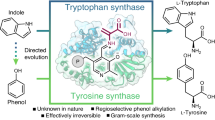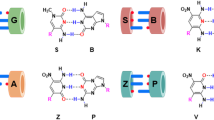Abstract
We have used the methylotrophic yeast, Pichia pastoris, to express high levels of tetanus toxin fragment C, a potential sub-unit vaccine against tetanus. In high bio-mass fermentations fragment C was induced to 27% of total cell protein or about 12g/l of culture. The purified protein was as effective as native fragment C in immunizing mice. In order to optimize fragment C production, we have examined the parameters affecting foreign gene expression in Pichia. The level of expression was found to be largely independent of the site of chromosomal integration of the gene (AOX1 or HIS4), the type of integrant (insertion or transplacement), and the methanol utilisation phenotype of the host strain (Mut+ or Muts). The most important factor in obtaining high levels was the presence of multiple integrated copies of the fragment C expression cassette. Multicopy clones could be isolated from transformations using DNA fragments targeted for single-copy transplacement into the chromosome. These multicopy transformants were surprisingly stable over multiple generations during growth and induction in high cell density fermentations. Analysis of chromosomal DNA from these clones suggests that they arose by circularization of the transforming DNA fragment in vivo followed by multiple insertion into the chromosome via repeated single crossover recombination, in addition to the expected transplacement event. We have found this to be a general phenomenon and have used these multicopy “transplacement” clones to obtain high-level expression of several other foreign genes in Pichia.
This is a preview of subscription content, access via your institution
Access options
Subscribe to this journal
Receive 12 print issues and online access
$209.00 per year
only $17.42 per issue
Buy this article
- Purchase on Springer Link
- Instant access to full article PDF
Prices may be subject to local taxes which are calculated during checkout
Similar content being viewed by others
References
Cregg, J.M., Tschopp, J.F., Stillman, C., Siegel, R., Akong, M., Craig, W.S., Buckholtz, R.G., Madden, K.R., Kellaris, P.A., Davis, G.R., Smiley, B.L., Cruze, J., Torregrossa, R., Velicelebi, G. and Thill, G.P. 1987. High-level expression and efficient assembly of hepatitis B surface antigen in the methylotrophic yeast, Pichia pastoris Bio/Technology 5: 479–485.
Sreekrishna, K., Nelles, L., Potenz, R., Cruze, J., Mazzaferro, P., Fish, W., Motohiro, F., Holden, K., Phelps, D., Wood, P. and Parker, K. 1989. High-level expression, purification, and characterisation of recombinant human tumour necrosis factor synthesised in the methylotrophic yeast Pichia pastoris. Biochemistry 28: 4117–4125.
Tschopp, J.F., Sverlow, G., Kosson, R., Craig, W. and Grinna, L. 1987. High-level secretion of glycosylated invertase in the methylotrophic yeast, Pichia pastoris. Bio/Technology 5: 1305–1308.
Hitzman, D.L., Wegner, G.H. and Shay, L.K. 1987. Applications of ultra-high density yeast fermentations. In: Biological Research on Industrial Yeast, Vol. 1. Stewart, G. G., Russell, I., Klein, R. D., and Heibsch, R. R. (Eds.). CRC Press, Boca Raton, FL.
Couderc, R. and Baratti, J. 1980. Oxidation of methanol by the yeast Pichia pastoris. Purification and properties of alcohol oxidase. Agri. Biol. Chem. 44: 2279.
Digan, M.E., Lair, S.V., Brierly, R.A., Siegel, R.S., Williams, M.E., Ellis, S.B., Kellaris, P.A., Provow, S.A., Craig, W.S., Velicelebi, G., Harpold, M.M. and Thill, G.P. 1989. Continuous production of a novel lysosyme via secretion from the yeast, Pichia pastoris. Bio/Technology 7: 160–164.
Schekman, R. and Novick, P. 1982. The secretory process and yeast cell surface assembly, p. 361–393. In: The Molecular Biology of The Yeast Saccharomyces, Metabolism and Gene Expression. Strathern, J. N., Jones, E. W., and Broach, J. R. (Eds.). Cold Spring Harbor Laboratory Press.
Tschopp, J.F., Brust, P.F., Cregg, J.M., Stillman, C.A. and Gin-geras, T.R. 1987. Expression of the lacZ gene from two methanol-regulated promoters in Pichia pastoris. Nucleic Acid Res. 15: 3859–3876.
Helting, T.B. and Nau, H.H. 1984. Analysis of the immune response to papain digestion products of tetanus toxin. Act. Pathol. Microbiol. Scan. Sect. C 92: 59–63.
Helting, T.B. and Zwisler, O. 1977. Structure of tetanus toxin I. Breakdown of the molecule and descrimination between polypeptide fragments. J. Biol. Chem. 252: 187–193.
Romanos, M.A., Makoff, A.J., Fairweather, N.F., Beesley, K.M., Slater, D.E., Rayment, F.B., Payne, M.M. and Clare, J.J 1991. Expression of tetanus toxin Fragment C in yeast: gene synthesis is required to eliminate fortuitous polyadenylation sites in AT-rich DNA. Nucleic Acids Res. In press.
Digan, M.E., Tschopp, J., Grinna, L., Lair, S.V., Craig, W.S., Velicelebi, G., Siegel, R., Davis, G.R. and Thill, G.P. 1988. Secretion of heterologous proteins from the methylotrophic yeast, Pichia pastoris. Dev. Ind. Microbiol. 29: 59–65.
Cregg, J.M. and Madden, K.N. 1987. Development of transformation systems and construction of methanol-utilisation-defective mutants of Pichia pastoris by gene disruption. In: Biological Research on Industrial Yeast, Vol II. Stuart, G. G. (Ed.). CRC Press, Boca Raton, FL.
Makoff, A.J., Oxer, M.D., Romanos, M.A., Fairweather, N.F. and Ballantine, S.P. 1989. Expression of tetanus toxin fragment C in E.coli: high level expression by removing rare codons. Nucleic Acids Res. 17: 10191–10202.
Chen, Y.C., Oppermann, H. and Hitzeman, R.A. 1984. Homologous versus heterologous gene expression in the yeast, Saccharomyces cerevisiae. Nucleic Acid Res. 12: 8951–8970.
Mellor, J., Dobson, A.J., Kingsman, A.J. and Kingsman, S.M. 1987. A transcriptional activator is located in the coding region of the yeast PGK gene. Nucleic Acids Res. 15: 7963–7974.
Cregg, J.M., Barringer, K.J., Hessler, A.Y. and Madden, K.R. 1985. Pichia pastoris as a host system for transformations. Molec. Cell Biol. 5: 3376–3385.
Makoff, A.J., Ballantine, S.P., Smallwood, A.E. and Fairweather, N.F. 1989. Expression of tetanus toxin fragment C in E.coli: its purification and potential use as a vaccine. Bio/Technology 7: 1043–1046.
Sherman, F., Fink, G.R. and Lawrence, C.W. 1983. Methods in Yeast Genetics. Cold Spring Harbor, NY.
Feinberg, A. and Vogelstein, B. 1983. A technique for radiolabelling DNA restriction endonuclease fragments to high specific activity. Anal. Biochem. 132: 6–13.
Author information
Authors and Affiliations
Rights and permissions
About this article
Cite this article
Clare, J., Rayment, F., Ballantine, S. et al. High-Level Expression of Tetanus Toxin Fragment C in Pichia Pastoris Strains Containing Multiple Tandem Integrations of the Gene. Nat Biotechnol 9, 455–460 (1991). https://doi.org/10.1038/nbt0591-455
Received:
Accepted:
Issue Date:
DOI: https://doi.org/10.1038/nbt0591-455
This article is cited by
-
Full-length versus truncated α-factor secretory signal sequences for expression of recombinant human insulin precursor in yeast Pichia pastoris: a comparison
Journal of Genetic Engineering and Biotechnology (2023)
-
Rapid Screening for High Expressing Multicopy Recombinants and Enhanced Epidermal Growth Factor (EGF) Protein Production Using Pichia Pastoris
International Journal of Peptide Research and Therapeutics (2022)
-
A modular two yeast species secretion system for the production and preparative application of unspecific peroxygenases
Communications Biology (2021)
-
Improved microscale cultivation of Pichia pastoris for clonal screening
Fungal Biology and Biotechnology (2018)
-
Efficient production of secretory Streptomyces clavuligerus β-lactamase inhibitory protein (BLIP) in Pichia pastoris
AMB Express (2018)



